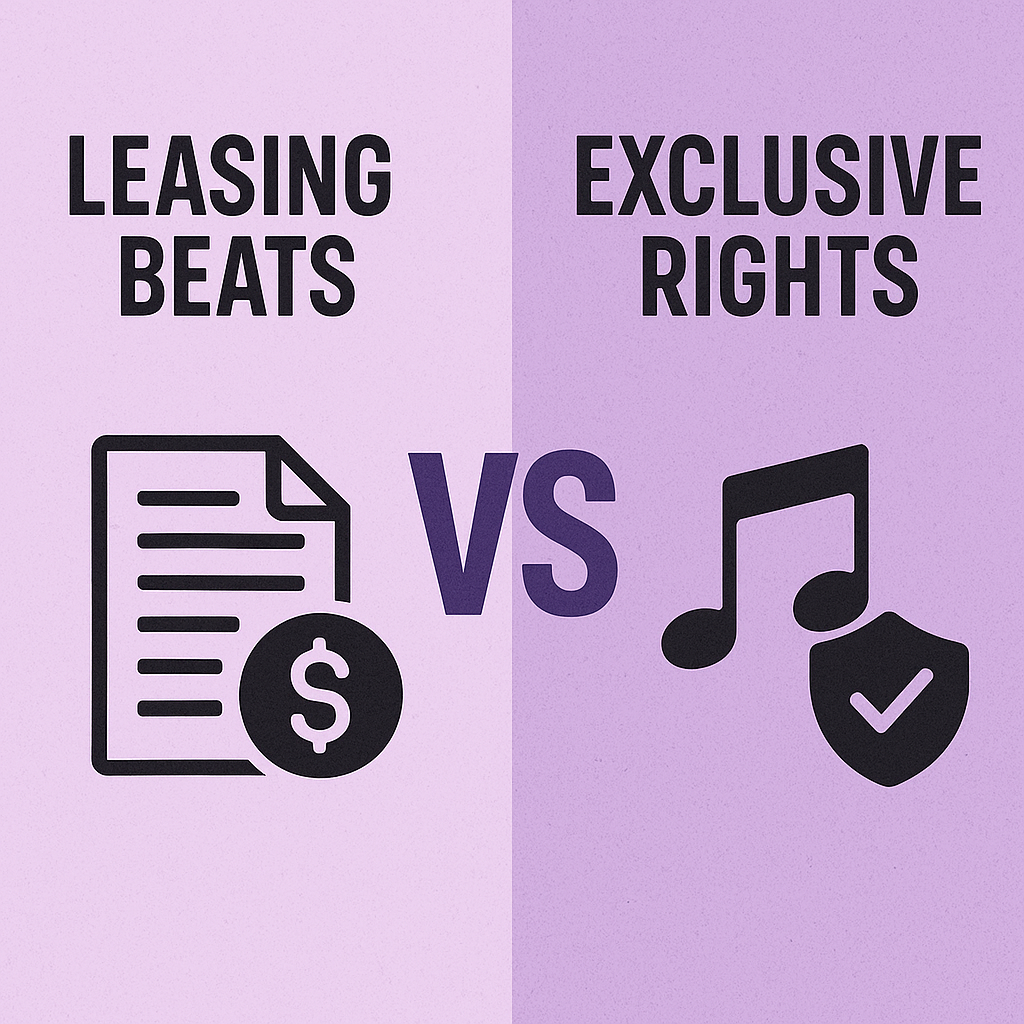Making the right choice for your tracks can shape your entire creative path. This guide helps artists at every level understand their options without breaking the bank. You’ll learn how different licensing agreements affect your projects, wallet, and future opportunities.
Why does this matter? The path you pick influences how widely your work spreads and who else can use the same instrumentals. Some creators prefer flexibility, while others want full control. We’ll show you how both approaches work in real situations.
You’ll get clear comparisons of costs, usage limits, and long-term benefits. Hear directly from producers and musicians who’ve faced these choices. Their stories reveal what works—and what doesn’t—for growing audiences and income.
By the end, you’ll know exactly which option fits your current goals. Whether you’re dropping your first single or building a catalog, smart decisions now save headaches later. Let’s unlock the best strategy for your sound.
Key Takeaways
- Understand core differences between temporary access and full ownership of instrumentals
- Learn how licensing choices affect your budget and creative freedom
- Discover scenarios where each option shines based on career stage
- Get actionable tips from industry professionals and successful artists
- Identify red flags in contracts that could limit your music’s growth
Understanding Beat Licensing: Leasing and Exclusive Rights
Your decision on track permissions directly impacts your creative control and revenue. Let’s break down two fundamental approaches artists use to secure instrumentals.
What Is Leasing Beats?
Think of this as a rental agreement for music production. You pay for temporary access under specific conditions. A typical $30 agreement might let you distribute 5,000 copies of your song. Producers keep ownership and can sell the same instrumental multiple times.
“Leasing lets artists experiment without major financial risks. It’s like test-driving a car before buying.”
This model works well for mixtapes or early-career projects. You get professional-quality tracks while keeping costs low. Most agreements last 1-5 years with clear stream limits.
Overview of Exclusive Rights
Full ownership changes the game. When you buy these rights:
- The instrumental disappears from marketplaces
- You receive high-quality WAV files and separated tracks
- No expiration dates or usage caps apply
| Feature | Temporary Access | Full Ownership |
|---|---|---|
| Cost Range | $30 – $200 | $500+ |
| Distribution Limit | 5K-50K units | Unlimited |
| File Types | MP3/WAV | Stems + Mixing Files |
This option suits established artists wanting complete creative control. You’ll negotiate publishing splits and sync rights upfront.
When to Lease Beats or Opt for Exclusive Rights
Your music journey’s phase determines which path fuels growth without draining resources. Let’s explore how to match your creative needs with smart financial planning.
Spotting Your Creative Milestones
New creators often rush into expensive decisions. If your social media following sits below 10,000 or your tracks haven’t hit 1,000 plays, temporary agreements protect your budget. One producer puts it bluntly: “Spending $800 on full ownership makes zero sense if you’re still building your first listeners.”
Established acts with 100k+ followers or label backing benefit most from permanent control. These artists typically reinvest earnings into marketing campaigns and high-end video production.
Crunching the Numbers
Consider this real-world math: A $30 lease lets you sell 5,000 copies. Sell 300 tracks at $1 each? You keep $270. Buy permanent rights for $800 with the same sales? You’re $500 in the red.
- Early-stage creators: Focus on multiple releases
- Mid-career artists: Balance quality and quantity
- Established acts: Secure unique sounds for branding
Smart budgeting means accounting for hidden costs like mixing services and promotion. Many emerging talents forget these extras when calculating potential profit margins.
“Three leased tracks outperformed my one expensive exclusive purchase last year. Volume builds audiences faster than perfectionism.”
leasing beats vs exclusive rights: Making the Best Choice for Your Music Career
Navigating music licensing requires balancing immediate needs with long-term goals. Let’s examine practical scenarios and lesser-known alternatives that could reshape your strategy. Whether you’re new to the genre or refining your craft, this detailed tutorial on structuring a rap song effectively breaks down the creative process step by step.
Real World Examples and Case Studies
Producer Nick Nash sparked debate by selling an exclusive license for $250 after minimal lease earnings. His tweet—”I’ve only got 1 placement”—highlights how new creators often undervalue their work. BeatStars CEO Abe Batshon offers a smarter approach:
“Calculate your track’s 12-month lease revenue. If it hits $2,000, that’s your baseline price for full ownership.”
Top producers sometimes skip exclusives entirely. One hit instrumental generated $18,000 through three years of recurring leases. This proves non-exclusive options can outearn one-time sales when tracks have staying power. Navigating the online marketplace for instrumentals becomes easier once you’re aware of essential insights when buying beats online.
Alternative Licensing Options for Independent Artists
Unlimited Licenses bridge the gap between temporary access and full ownership. For 60% less than exclusives, artists get:
- No stream or sales caps
- Renewable terms (typically 2-5 years)
- 50% publishing rights
This model works well for tracks expected to gain traction slowly. Artists keep costs manageable while producers continue earning from multiple licenses. It’s become a popular choice for YouTube creators and podcast theme music.
When choosing your path, consider hourly earnings versus long-term potential. A $250 exclusive sale equals $125/hour for a two-hour beat—solid pay for new producers. But established creators might make ten times that through strategic leasing. It’s worth directing your audience to a credible source examining the significance of instrumental music and whether it fits conventional genre labels to support your analysis.
Conclusion
Your music’s future hinges on strategic choices today. New creators should prioritize affordable licenses to build their catalog without draining funds. Focus on consistent releases—quality tracks attract fans faster than perfecting one song.
Established acts gain value from permanent ownership rights. Full control lets you monetize freely and craft a unique sound. But wait until your streams justify the investment—rushing into exclusives can stall progress. Artists interested in monetizing their talent should explore our comprehensive advice on turning passion into a full-time music profession.
The modern market offers flexible paths. Start with short-term agreements to test tracks, then upgrade as your audience grows. Many successful artists began with leased beats before securing premium rights for standout pieces.
Smart decisions now create a strategic foundation. Whether you choose temporary access or full ownership, align every choice with your current reach and revenue. Adapt your approach as your career evolves—sustainable growth beats overnight fame every time. If you’re evaluating music distributors, this guide on how DistroKid compares to CD Baby covers fees, features, and royalty structures.



